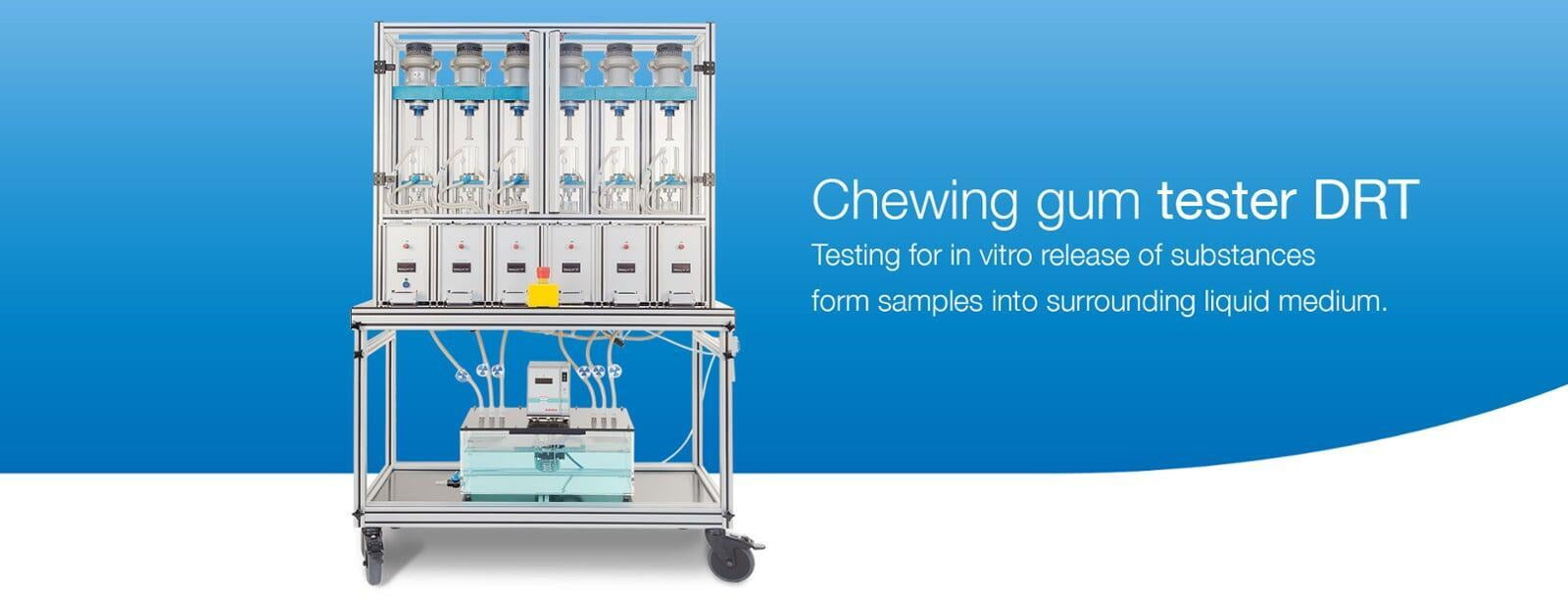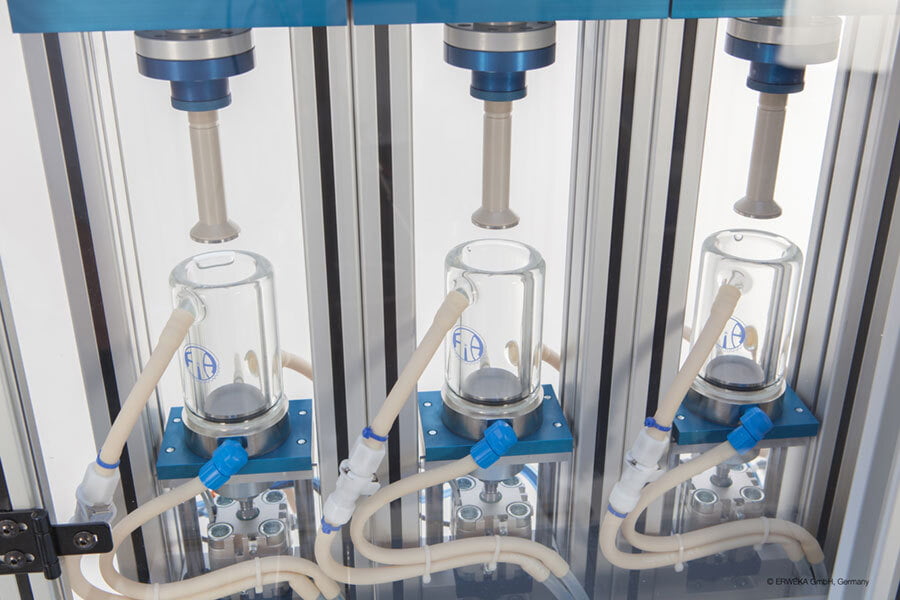Chewing Gum Tester DRT
Testing for in vitro release of substances from sample into surrounding liquid medium
Chewing Gum Tester DRT
Testing for in vitro release of substances from sample into surrounding liquid medium
USP 4 Flow-Through Cell DFZ II
USP 4 Flow-Through Cell DFZ II
The ERWEKA DRT is the perfect device for testing of in vitro releases of substances from chewing gums and other dosage forms, that have to be masticated, into the surrounding liquid medium. The vertical up and down strokes of the lower jaw in combination with a revolving movement of the upper jaw provide ideal mastication of the chewing gum and at the same time an agitation of the test medium.
For manual sampling, emptying and cleaning the lower jaw with the test cell can be lowered into a down position, so that the chewing process stops. The test cell, the upper and lower jaw can then be easily removed. A water circulation system controls and regulates the water temperature in the test cell around the media. The chewing gum test apparatus is used to chew gums and analyzes then the speed at which various substances leave the gum (release). In addition, the device is very helpful for developing candy chewing gums, but it can also be used for unusual purposes such as testing of snuff bags.
As the DRT offers a modular design, any number of chewing gums can be tested with the DRT-6 at the same time, with 6 test stations the most commonly used. The cells can be equipped with additional accessories for measuring variables such as the pressure of chewing gums, torque at shear force (twisting motion), pH-value and temperature. All measurements are logged into a data collector and can then be printed out.
The three steps of testing with DRT
The three steps of testing with DRT
Chewing: A chewing gum is placed between two nets in the bowl of the lower jaw and the glass vessel is filled with fluid. The chewing gum is then processed (chewed) for approximately half an hour.
Sampling: The lower jaw with the test cell is lowered using the lift. In its lowered position the unit is free from the upper jaw, which facilitates manual sampling, emptying and cleaning after analysis.
Cleaning: The test cell and the lower and upper jaw can be easily removed and cleaned or can be replaced by clean elements, enabling a large number of test runs each day.


